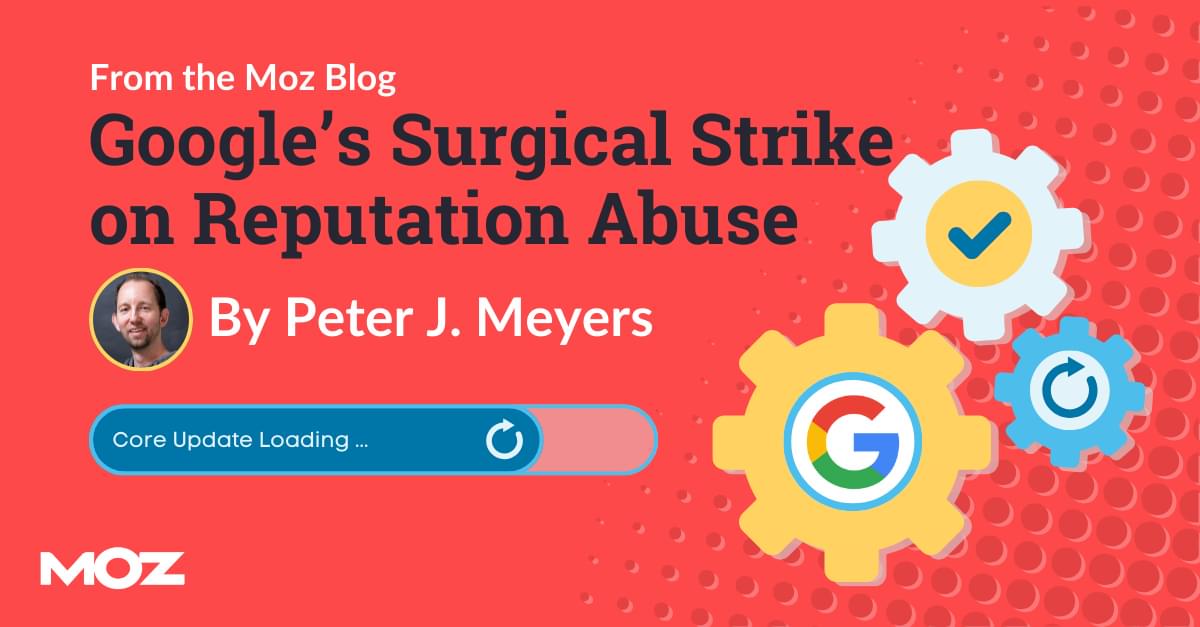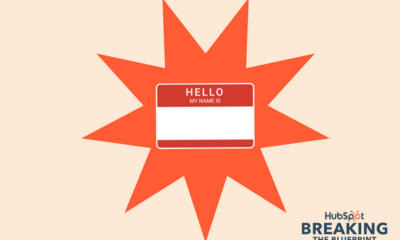MARKETING
Brand Equity and Its Impact on Revenue

It has long been common for marketers to have separate media buying budgets for branding efforts and performance-driving efforts, with each living on their own proverbial side of the house. Branding budgets have historically had their own set of KPIs, different from those tracked and measured for performance marketing initiatives, with the dichotomy implying that one has no influence on the other.
But we all know brand and performance don’t live in vacuums.
For example, even the most sophisticated, omnichannel marketing campaign isn’t likely to drive sales for a product if the manufacturer of that product is making headlines for safety concerns or quality control issues. The problem hasn’t been that marketers don’t believe the two impact one another, rather that they had no measurable way to show it.
Unable to meaningfully tie brand-driven effects to performance outcomes has left marketers relegated to basic metrics like reach and frequency. This puts more pressure on performance dollars to improve metrics including ROAS (return on ad spend), CAC (customer acquisition cost), and CPAs (cost per acquisition).
We hypothesize that brand heavily influences performance and have identified a streamlined way to more effectively measure it on an ongoing basis. Failing to account for brand equity leaves marketers underestimating the total value of their campaigns, missing a fundamental driver of both ROAS and their bottomline business.
What is brand equity?
At Tinuiti, we think of brand equity as the cumulative set of widely held perceptions, incorporating both the value propositions of your product itself, and the positive and negative sentiments about your brand as a whole. These perceptions can significantly influence consumer behavior, and through that behavior, influence revenue over time.
Example scenario:
Imagine you own and operate a popular coffee shop in your neighborhood and have built a great reputation that earns you a lot of word-of-mouth business. Despite your success, you decide to close your coffee shop for a few years so you can travel the world.
Fast-forward a few years and you’re set to reopen, but have decided to go with a totally new name for your shop. Do you think you would receive the same response from the market immediately, as though you’d never left and nothing had changed? We don’t believe so.
Trust is a key ingredient of a strong brand, and just as in other aspects of life, trust is slow to build and can be lost very quickly. However, the promise of your brand could be rebuilt over time to help eventually get back to where you started.
Brand equity is slow to build but has long-lasting effects on consumers, while brand health can have a significant impact on the revenue you’re driving today. Furthermore—business outcomes, such as revenue—have traditionally been attributed to performance marketing…but this relationship is incomplete.
We believe brand equity is a key missing piece in the equation that gets us closer to accurate attribution of business outcomes.
Is brand equity the same as brand health?
As marketers, there is a hidden set of variables we all struggle to measure, understand, and leverage to our benefit as they relate to the slowly-won equity of a brand, with the terms “brand equity” and “brand health” often being used interchangeably. However, we think of brand equity as a broader umbrella term that represents the intangible value of a brand, while brand health is more closely associated with the immediate perception of a brand at a particular point in time.
Impact of Brand Equity: Painting the Complete Picture
As a performance marketing firm, accurate measurement and attribution is key for our teams. However, as we explored above, performance marketing alone paints an incomplete picture.
In our quest to better understand all revenue-driving aspects of a given campaign, we have started on a process to quantify the impact of Brand Equity, which we believe is one of the largest missing pieces in more accurate and complete measurement.
To do so, we are looking at Brand Health in the modeling and analysis phase as it reflects Brand Equity at a given point in time, is measurable in real-time, and can be tied to business outcomes such as revenue.
Ultimately, we hope our research will help us answer important Marketing questions like:
- “How did a given brand campaign impact sales, or help in achieving other campaign goals?”
- “Which investments are the most potent drivers of brand health outcomes?”
- “How do changes in brand health impact bottom-line business outcomes?”
- “How much do I need to invest to move brand health outcomes X by Y?”
These complex questions can be distilled into 2 essential questions:
- How does media impact brand health outcomes?
- How does brand health impact business outcomes?
We are currently developing a robust quantitative framework to answer these two essential questions. While randomized control trials are the gold standard for causal inference, brand-building is a slow process, and running these experiments can be both time-consuming and expensive.
Media Mix Modeling (MMM) provides a neat alternative to this problem by leveraging observational data. We chose Meta’s open-source MMM tool, Robyn, for our framework, thanks to its sophistication and ease of use.
Conclusion
While brand and performance marketing investments are often managed and measured separately, we believe that they have a significant impact on each other. We believe the impact of brand equity on revenue to be supplementary, and this crucial element is often overlooked by marketers when estimating ROAS.
Tinuiti will be working with Meta in 2024 to provide a deeper dive into our collaborative efforts supporting brand health measurement. Stay tuned!
This article was a collaborative effort, with contributions from additional individuals, including Shannon Mullery, Senior Content Specialist, Marketing at Tinuiti, Kevin O’Connor, Manager, Econometrics at Tinuiti and Kolin Kleveno, SVP, Partnerships at Tinuiti.
MARKETING
Google’s Surgical Strike on Reputation Abuse

These aren’t easy questions. On the one hand, many of these sites do clearly fit Google’s warning and were using their authority and reputation to rank content that is low-relevance to the main site and its visitors. With any punitive action, though, the problem is that the sites ranking below the penalized sites may not be of any higher quality. Is USA Today’s coupon section less useful than the dedicated coupon sites that will take its place from the perspective of searchers? Probably not, especially since the data comes from similar sources.
There is a legitimate question of trust here — searchers are more likely to trust this content if it’s attached to a major brand. If a site is hosting third-party content, such as a coupon marketplace, then they’re essentially lending their brand and credibility to content that they haven’t vetted. This could be seen as an abuse of trust.
In Google’s eyes, I suspect the problem is that this tactic has just spread too far, and they couldn’t continue to ignore it. Unfortunately for the sites that were hit, the penalties were severe and wiped out impacted content. Regardless of how we feel about the outcome, this was not an empty threat, and SEOs need to take Google’s new guidelines seriously.
MARKETING
18 Events and Conferences for Black Entrepreneurs in 2024

Welcome to Breaking the Blueprint — a blog series that dives into the unique business challenges and opportunities of underrepresented business owners and entrepreneurs. Learn how they’ve grown or scaled their businesses, explored entrepreneurial ventures within their companies, or created side hustles, and how their stories can inspire and inform your own success.
It can feel isolating if you’re the only one in the room who looks like you.
MARKETING
IAB Podcast Upfront highlights rebounding audiences and increased innovation


Podcasts are bouncing back from last year’s slowdown with digital audio publishers, tech partners and brands innovating to build deep relationships with listeners.
At the IAB Podcast Upfront in New York this week, hit shows and successful brand placements were lauded. In addition to the excitement generated by stars like Jon Stewart and Charlamagne tha God, the numbers gauging the industry also showed promise.
U.S. podcast revenue is expected to grow 12% to reach $2 billion — up from 5% growth last year — according to a new IAB/PwC study. Podcasts are projected to reach $2.6 billion by 2026.
The growth is fueled by engaging content and the ability to measure its impact. Adtech is stepping in to measure, prove return on spend and manage brand safety in gripping, sometimes contentious, environments.
“As audio continues to evolve and gain traction, you can expect to hear new innovations around data, measurement, attribution and, crucially, about the ability to assess podcasting’s contribution to KPIs in comparison to other channels in the media mix,” said IAB CEO David Cohen, in his opening remarks.
Comedy and sports leading the way
Podcasting’s slowed growth in 2023 was indicative of lower ad budgets overall as advertisers braced for economic headwinds, according to Matt Shapo, director, Media Center for IAB, in his keynote. The drought is largely over. Data from media analytics firm Guideline found podcast gross media spend up 21.7% in Q1 2024 over Q1 2023. Monthly U.S. podcast listeners now number 135 million, averaging 8.3 podcast episodes per week, according to Edison Research.
Comedy overtook sports and news to become the top podcast category, according to the new IAB report, “U.S. Podcast Advertising Revenue Study: 2023 Revenue & 2024-2026 Growth Projects.” Comedy podcasts gained nearly 300 new advertisers in Q4 2023.
Sports defended second place among popular genres in the report. Announcements from the stage largely followed these preferences.
Jon Stewart, who recently returned to “The Daily Show” to host Mondays, announced a new podcast, “The Weekly Show with Jon Stewart,” via video message at the Upfront. The podcast will start next month and is part of Paramount Audio’s roster, which has a strong sports lineup thanks to its association with CBS Sports.
Reaching underserved groups and tastes
IHeartMedia toasted its partnership with radio and TV host Charlamagne tha God. Charlamagne’s The Black Effect is the largest podcast network in the U.S. for and by black creators. Comedian Jess Hilarious spoke about becoming the newest co-host of the long-running “The Breakfast Club” earlier this year, and doing it while pregnant.
The company also announced a new partnership with Hello Sunshine, a media company founded by Oscar-winner Reese Witherspoon. One resulting podcast, “The Bright Side,” is hosted by journalists Danielle Robay and Simone Boyce. The inspiration for the show was to tell positive stories as a counterweight to negativity in the culture.
With such a large population listening to podcasts, advertisers can now benefit from reaching specific groups catered to by fine-tuned creators and topics. As the top U.S. audio network, iHeartMedia touted its reach of 276 million broadcast listeners.
Connecting advertisers with the right audience
Through its acquisition of technology, including audio adtech company Triton Digital in 2021, as well as data partnerships, iHeartMedia claims a targetable audience of 34 million podcast listeners through its podcast network, and a broader audio audience of 226 million for advertisers, using first- and third-party data.
“A more diverse audience is tuning in, creating more opportunities for more genres to reach consumers — from true crime to business to history to science and culture, there is content for everyone,” Cohen said.
The IAB study found that the top individual advertiser categories in 2023 were Arts, Entertainment and Media (14%), Financial Services (13%), CPG (12%) and Retail (11%). The largest segment of advertisers was Other (27%), which means many podcast advertisers have distinct products and services and are looking to connect with similarly personalized content.
Acast, the top global podcast network, founded in Stockholm a decade ago, boasts 125,000 shows and 400 million monthly listeners. The company acquired podcast database Podchaser in 2022 to gain insights on 4.5 million podcasts (at the time) with over 1.7 billion data points.
Measurement and brand safety
Technology is catching up to the sheer volume of content in the digital audio space. Measurement company Adelaide developed its standard unit of attention, the AU, to predict how effective ad placements will be in an “apples to apples” way across channels. This method is used by The Coca-Cola Company, NBA and AB InBev, among other big advertisers.
In a study with National Public Media, which includes NPR radio and popular podcasts like the “Tiny Desk” concert series, Adelaide found that NPR, on average, scored 10% higher than Adelaide’s Podcast AU Benchmarks, correlating to full-funnel outcomes. NPR listeners weren’t just clicking through to advertisers’ sites, they were considering making a purchase.
Advertisers can also get deep insights on ad effectiveness through Wondery’s premium podcasts — the company was acquired by Amazon in 2020. Ads on its podcasts can now be managed through the Amazon DSP, and measurement of purchases resulting from ads will soon be available.
The podcast landscape is growing rapidly, and advertisers are understandably concerned about involving their brands with potentially controversial content. AI company Seekr develops large language models (LLMs) to analyze online content, including the context around what’s being said on a podcast. It offers a civility rating that determines if a podcast mentioning “shootings,” for instance, is speaking responsibly and civilly about the topic. In doing so, Seekr adds a layer of confidence for advertisers who would otherwise pass over an opportunity to reach an engaged audience on a topic that means a lot to them. Seekr recently partnered with ad agency Oxford Road to bring more confidence to clients.
“When we move beyond the top 100 podcasts, it becomes infinitely more challenging for these long tails of podcasts to be discovered and monetized,” said Pat LaCroix, EVP, strategic partnerships at Seekr. “Media has a trust problem. We’re living in a time of content fragmentation, political polarization and misinformation. This is all leading to a complex and challenging environment for brands to navigate, especially in a channel where brand safety tools have been in the infancy stage.”
Dig deeper: 10 top marketing podcasts for 2024
-

 PPC7 days ago
PPC7 days agoHow the TikTok Algorithm Works in 2024 (+9 Ways to Go Viral)
-

 SEO6 days ago
SEO6 days agoHow to Use Keywords for SEO: The Complete Beginner’s Guide
-

 MARKETING7 days ago
MARKETING7 days agoHow To Protect Your People and Brand
-

 MARKETING4 days ago
MARKETING4 days agoAdvertising on Hulu: Ad Formats, Examples & Tips
-

 MARKETING5 days ago
MARKETING5 days agoUpdates to data build service for better developer experiences
-

 MARKETING1 day ago
MARKETING1 day ago18 Events and Conferences for Black Entrepreneurs in 2024
-

 MARKETING6 days ago
MARKETING6 days agoThe Ultimate Guide to Email Marketing
-

 SEO7 days ago
SEO7 days agoAutomate Multi-Site Reporting With Google Sheets And GSC API













